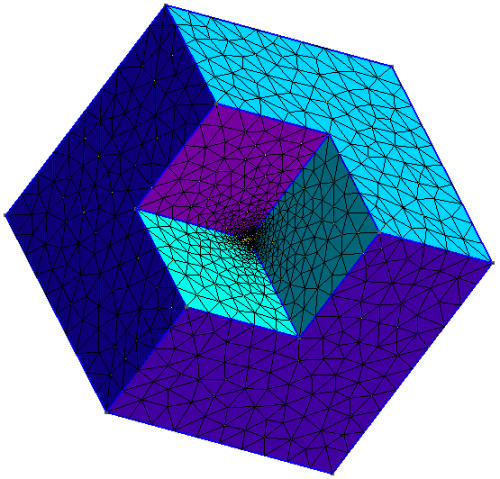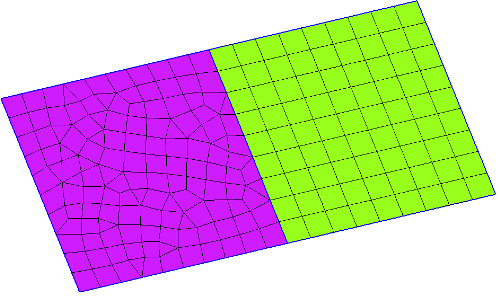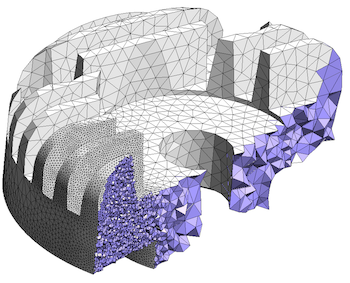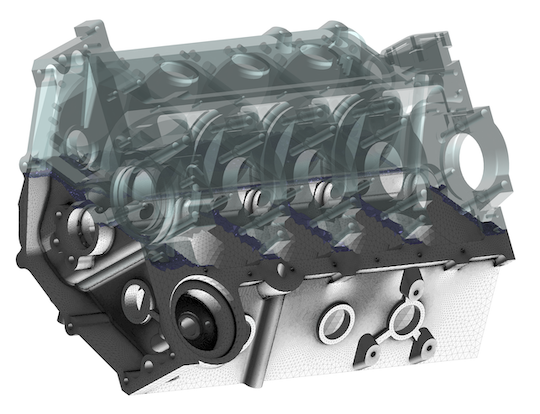
We can now create a mesh from this geometry that conforms with the internal structure we defined.Īfter setting the display parameters as in Tutorial 1, and activating a clipping plane, the internal surfaces of the segmented mesh can be viewed in gmsh.įile | Save mesh Adding layer information to the mesh in ToastĪs before, you can load the gmsh mesh file into Toast.
Gmsh 3d mesh tutorial generator#
Create the mesh in Gmsh, a 3D finite element mesh generator with parametric.
Gmsh 3d mesh tutorial how to#
Click on the subsurface concentric layer, followed by the small inclusion. In this example, we learn how to define arbitrary geometries, boundaries.Click on one of the surface lines for the outer surface, followed by a line for the subsurface concenctric layer.Modules | Geometry | Elementary entities | Add | Volume.Tools | Options | Geometry | Tick 'surfaces' and 'surface labels'.We now need to define the surfaces that bound the three sub-volumes: Two of the regions are bounded by two surfaces each, and one (the small inner sphere) by a single surface. The domain is now segmented into three regions by three surfaces. blockset with a specific name to add material properties, boundary conditions, loadings.Duplicata Īdding an off-centre internal sphere surface Defining the sub-volumes Generate MoFEM-compatible input mesh in *.h5m format using read_med toolĪs the mesh created by Gmsh does not contains attributes that may be needed for some tasks for analysis in MoFEM, e.g. Description and features: Here the capability to generate hybrid mesh (hexahedron + tetrahedrons) along with 1:1 interface is explained.Create a config file to add information (block name, material properties, boundary conditions, loadings) to the defined physical groups (blocksets).This section would be very similar to the one presented in MSH-1: Create a 2D mesh from Gmsh. then choose the file type Mesh - MED (*.med) and give a file name, e.g. This can be done by go to File -> Export. Then provide the geometry inputs including location (X, Y, Z) and dimensions (DX, DY, DZ) as shown in Figure 1 and click Add and then press q on the keyboard to finish.Ī preferred mesh format that will be exported is MED.

In order to create a geometry of a square, from the panel on the left, choose Modules -> Geometry -> Elementary entities -> Add -> Box. The data presented in this tutorial can be found at the directory /mofem_install/mofem-cephas/mofem/users_modules/tutorials/msh-2

Original corresponding Gmsh keyword is Mesh. Use read_med to generate a MoFEM-compatible input mesh Recombine all triangular meshes - if this box is checked in, Gmsh will recombine triangles into quadrangles.Create a seperate config file to add attributes to blocksets (physical group).Create geometry, physical group and mesh in Gmsh.The steps presented in this turorial are as follows


This would be largely the same as those presented in MSH-1: Create a 2D mesh from Gmsh which readers are recommended to have a look at first. This tutorial shows how to create a simple 3D square mesh in Gmsh with some physical groups and then use the MoFEM tool read_med to generate a MoFEM-compatible input mesh for analysis.


 0 kommentar(er)
0 kommentar(er)
